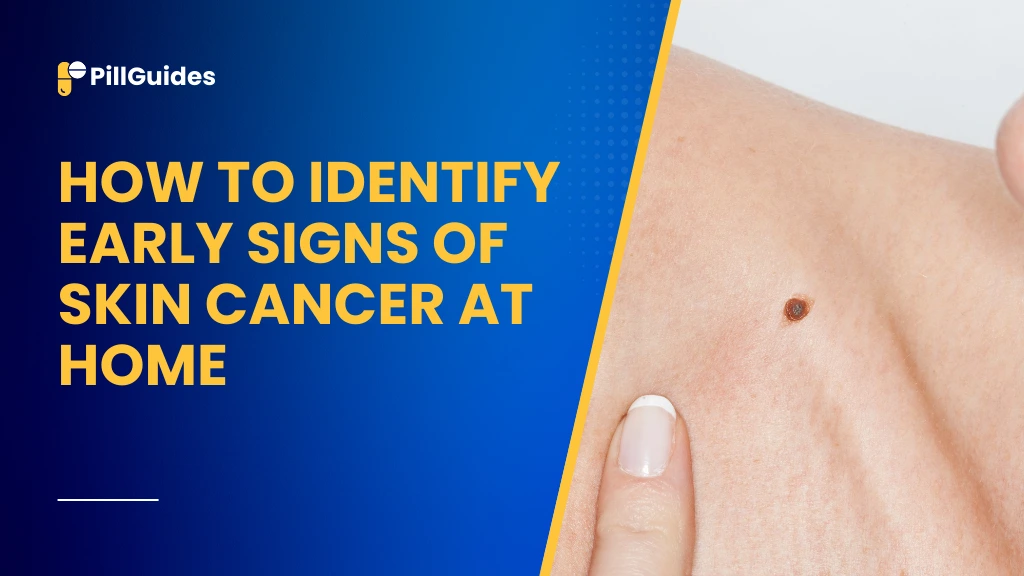Skin cancer is the most common type of cancer worldwide, but early detection greatly improves the outcome of treatment. You can catch potential skin cancer issues before they get serious, if only by recognizing early signs of skin cancer at home. By regularly looking at your skin and knowing what to look for, you can take proactive steps in maintaining your health and preventative health.
This guide will examine the early symptoms of skin cancer, how to give yourself a full body check, and when to see a dermatologist. We will also provide answers to common questions to simplify this process.
Understanding Skin Cancer: An Overview
Skin cancer is simply when abnormal skin cells grow out of control, usually because of damage caused by ultraviolet (UV) radiation from the sun or tanning bed. The three most common types of skin cancer are:
- Basal Cell Carcinoma (BCC): Least aggressive type, the most common.
- Squamous Cell Carcinoma (SCC): Can spread if left untreated.
- Melanoma: One form that’s the most dangerous can spread to other organs.
Knowing which type you are can help you recognize those warning signs early.
Why Early Detection Matters
Early detection of skin cancer can:
- Take the pressure off invasive treatments.
- To stop cancer from spreading to other parts of the body.
- Improve the odds of survival, especially for melanoma.
If you can regularly examine your skin, you can spot unusual changes before they become life-threatening.
How to Perform a Skin Self-Examination
A simple and relatively quick self-exam is all that is required. Here’s how you can do it:
- Choose a Well-Lit Area: In a bright room, look at your mirror to see all of your body parts.
- Inspect All Areas: The things that you look at are your face, scalp, neck, chest, abdomen, arms, hands, legs, and feet. Remember to look in hidden places too, such as under your nails, between your toes, and behind your ears.
- Use a Handheld Mirror: The key is to look at your back, buttocks, and other hard-to-see areas.
- Track Changes: Record mole, freckle, and other marks, and watch for changes over time.
Key Signs of Skin Cancer to Watch For
1. Changes in Moles
Moles are one of the most common signs of skin cancer, and a change in the appearance of the mole is a common sign of skin cancer. The “ABCDE rule” can help you assess suspicious moles:
A – Asymmetry: The other half isn’t the same as the other side.
B – Border: Edges are irregular, blurred, or jagged.
C – Color: Any combination of shades of black, brown, tan, and other colors.
D – Diameter: Generally larger than 6mm (approximately the size of a pencil eraser).
E – Evolving: A change in size, shape, or color.
2. Red Patches or Scaly Skin that are Persistent
Basal cell carcinoma or squamous cell carcinoma can cause skin that doesn’t heal or develops redness and/or flaky skin.
3. New or Changing Growths
As always, look for new growths, such as warts, nodules, or lumps, and be aware they may bleed, ooze, or crust.
4. Non-Healing Sores
A sore that does not heal within a few weeks can be a warning sign of skin cancer. If it keeps reopening or oozing, this is particularly true.
5. Itching or Painful Lesions
If a lesion has unexplained itching, tenderness, or pain, it is skin cancer and should be checked out.
Preventing Skin Cancer at Home
Early detection is important, but prevention is just as important. Here are some tips to reduce your risk:
- Use Sunscreen Daily: Even on cloudy days, use sunscreen (preferably broad spectrum) with at least SPF 30.
- Avoid Tanning Beds: You’re almost certain to get skin cancer if you spend too much time in the sun or, worse still, use tanning beds.
- Wear Protective Clothing: When outdoors, cover your skin with hats, sunglasses, and long-sleeved shirts.
- Seek Shade: Sun exposure should be avoided, especially between 10 a.m. and 4 p.m. when UV rays are strongest.
- Check Medications: If you don’t know what medications you are on, some can increase sun sensitivity so ask your doctor.
When to See a Dermatologist
You should consult a dermatologist if you notice any of the following:
- A new mole or growth that looks different from your others.
- A mole or lesion that changes shape, size, or color.
- Sore areas or sores that keep coming back.
- Family history of a type of skin cancer.
People who have melanoma, which spreads fast, need early professional evaluation.
Conclusion
Early signs of skin cancer can be detected at home, which is an important first step for your health. You can dramatically decrease your risk for all of these by doing regular self-exams and knowing what to look for and what to prevent. However, if you see unusual things coming out of your skin or if you’re experiencing continued symptoms, again, you should always see a dermatologist.
Disclaimer
This article is for informational purposes only and does not replace professional medical advice, diagnosis, or treatment. Always seek advice from a qualified healthcare provider for concerns about your skin health.
Read More: How to Reduce Pregnancy Back Pain Naturally at Home
FAQs How to Identify Early Signs of Skin Cancer at Home
1. How is skin cancer in its early stages?
Skin cancer might look like a new growth or mole or sore that won’t go away. It may also appear as a scaly patch, shiny bump, or an irregular dark lesion.
2. How often should I do a skin self-exam?
Once a month, perform a self-exam and look for new or changing spots. Regular and early checks help one catch abnormalities sooner.
3. Is skin cancer possible in areas not exposed to the sun?
But even sun-prone areas are not necessarily immune, skin cancer can occur anywhere, such as in the palms, soles, or under the nails.
4. Are all moles indicative of skin cancer?
You should not assume that all moles are cancerous, but if you notice a change in your mole using the ABCDE rule, make an appointment to see a skin doctor. Your dermatologist should evaluate any unusual changes.
5. How can I use better self-exams?
It’s possible to record and track your skin for change using a handheld mirror, a smartphone camera, or even a mole mapping app.










